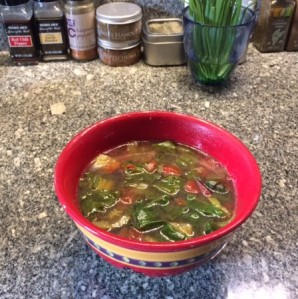We make soup stock all winter long by saving chicken bones and pieces of vegetables in a bag in the freezer. You know those ends of carrots, green peppers and other veggie bits you don’t eat? Well, don’t toss them. Save them up and then once you get enough, put them in a pan and cover with filtered water and simmer for a few hours on the stove or in a slow cooker. Then strain it and you’ve got the basics to make a great soup. Keep in mind, for best flavor you probably want to keep cruciferous vegetables to a minimum when making stock since they tend to give up off odors when boiled for a long time.
Soup stock made this way contains minerals like magnesium and potassium that are very easy for your body to absorb. Since many of us are deficient in magnesium this is a good thing. And you also have control over what goes into it. You add the salt, avoid MSG (aka yeast extract and many other names) and make it with organic ingredients. Plus it does not cost anything but the power to cook it!
The soup pictured below has a stock made from chicken bones, celery bits, carrot ends, red pepper tops, bay leaves, fresh rosemary from my garden and a few other vegetable bits. Once I strained the stock (and tossed the solids) I added celery, zucchini, tomatoes, chard, garlic, salt and other seasonings. You can also add meat. In this case I had some beef sausage from the farmers market that I cooked in a pan.
If you start making soup from your own soup stock, you’ll be pleasantly surprised how good it can be.



